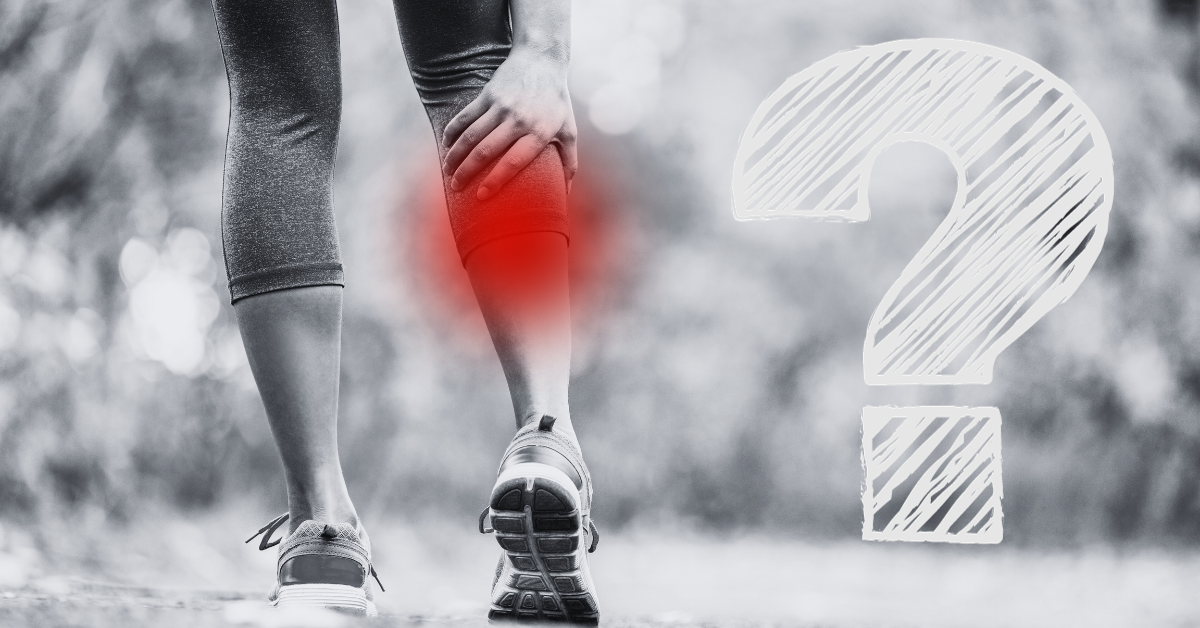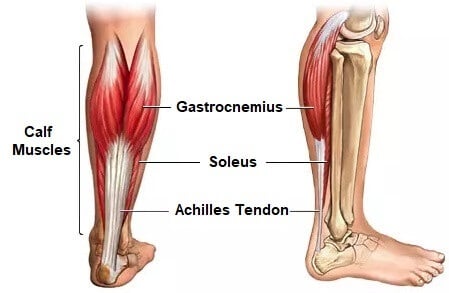Why Do My Calves Hurt When I Run: Exploring the Causes
Discover the reasons behind the pain in your calves when you run and how to prevent it!
Understanding the Anatomy of the Calf Muscles
The calves are made up of two major muscles: the gastrocnemius and the soleus. The gastrocnemius is the larger, more superficial muscle (the muscle you think of when you think of "calf muscles") while the soleus lies underneath. These muscles play a crucial role in running as they help produce and absorb force, provide stability to the ankle joint, and ultimately drive your ability to propel yourself forward. When you run, your calves contract and relax repeatedly, which can lead to muscle fatigue and soreness.
To fully understand "Why do my calves hurt when I run?" it's important to recognize the specific areas of the muscles that may be affected. The gastrocnemius muscle originates from the back of the knee, runs down the length of your leg and eventually forms the Achilles tendon, which attaches to the heel bone. The soleus muscle lies deeper and is more noticeable at the lower aspect/base of your "calf", closer to your heel. Both muscles can be strained or overworked during running, leading to discomfort and pain.
Muscle Fatigue and Overexertion
One of the most common causes of calf pain during running is muscle fatigue and overexertion. When you push your body beyond its limits or engage in intense physical activity without giving your muscles enough time to recover, they become fatigued. This can result in soreness, tightness, and pain in the calves.
To prevent muscle fatigue and overexertion, it's important to gradually increase your running intensity and duration. Allow your muscles enough time to rest and recover between workouts. Incorporating strength training exercises that target the calf muscles which helps you "build a bigger engine" will help you run more efficiently, run longer and ultimately reduce the risk of fatigue.
Dehydration and Electrolyte Imbalance
Dehydration and electrolyte imbalance can also contribute to calf pain while running. When you sweat during exercise, your body loses water and essential electrolytes like sodium, potassium, and magnesium. These electrolytes play a crucial role in muscle function and contraction. When they are imbalanced, it can lead to muscle cramps and discomfort.
To prevent dehydration and electrolyte imbalance, it's important to stay properly hydrated before, during, and after your runs. Drink enough water and consider consuming sports drinks or electrolyte-rich beverages to replenish lost electrolytes. Additionally, maintaining a balanced diet that includes foods rich in electrolytes can also help prevent imbalances.
The nutrition experts at Eleat Sports Nutrition have a great article about their Top 10 Electrolyte Products for Athletes. In the article they break down the nutrient balance in each product that they suggest, as well as recommendations based on what type of athlete or sweater you are!
Improper Running Form and Biomechanics
Running with improper form and biomechanics can put excessive strain on your calf muscles, leading to pain and discomfort. Common mistakes include over-striding, deviations or imbalances in your gait pattern, and inadequate warm-up or cool-down routines. These factors can increase the impact on your calves and increase the risk of injury.
To improve your running form and reduce calf pain, focus on maintaining a shorter or quicker stride which will often naturally cause you to land on your midfoot rather than on your heels, and engaging in dynamic warm-up exercises that target the calf muscles and running mechanics. It is important to gradually increase your mileage and pace to allow your muscles to adapt to the demands of running.
Underlying Medical Conditions
In some cases, calf pain during running may be a symptom of an underlying medical condition. Conditions such as muscle strains, tendinitis, compartment syndrome, and nerve impingements can all cause calf pain. If you experience persistent or severe calf pain that does not improve with rest and self-care measures, it's important to consult a healthcare professional for a proper diagnosis and treatment plan.
Depending on the underlying condition, treatment options may include physical therapy, medication, adjusting activity volume/frequency, or in some cases, surgery. It's important to address any underlying medical conditions to prevent further damage and ensure a safe and pain-free running experience.
What Can I Do to Reduce My Potential For Calf Pain?
As discussed already, there might be one or more reasons why you are experiencing calf pain when you are running. It is always best to be assessed by an expert to have your specific needs identified and addressed for the best results. A few easy things to incorporate in your "calf care" as explained above include calf (gastroc and soleus) strength, as well as proper lower body warm ups and mobility before and after running. Check our these examples:
Strength
Are your calves strong enough? Find out now! Watch our basic single leg heel raise test to see how you stack up!
To strengthen the gastrocnemius you are commonly doing heel raises in a more "straight leg position."
To strength the soleus you are going to position yourself with your knees slightly bent to isolate the function of the soleus.
With both exercises you may begin with body weight at first, but as you feel comfortable you can hold weight in your hand to increase the resistance/challenge and ultimately increase your strength.
Warm Up
In your warm up, you an begin with a short set of heel raises just to engage the muscle group. Movements like skips, pogos (see below) and a few build up sprints are a good way to warm up the muscles and prepare them for your run.
Mobility
Before running we tend to use more active mobility that comes from our warm up movements. However, if you have been identified to have a mobility difference that is causing your pain you might use one or both of these exercises to help you before and after your run. Please note, we do short duration holds (5-10 seconds maximum) prior to activity, whereas longer holds (greater than 30 seconds) are more appropriate after your run.
Take-Away's for Durable Calf Muscles
- Gradually increase your running intensity and duration
- Hydrate properly
- Assess your running form and biomechanics for inefficiencies
- Assess for any underlying medical conditions causing soreness or pain
- Create and impliment a proper warm up and cool down routine
Are You an Athlete Who Wants to Get Rid of Your Calf Pain and Improve Your Performance?
At Kinetic Sports Medicine and Performance we are equipped with a complete Athlete Performance Lab. With this technology, we are able to assess your strength, your ability to produce and absorb force, and a 3D Running Lab to identify any gait abnormalities that might contribute to your pain!
Specifically addressing these findings will not only help you reduce your potential for pain, but will likely help you run more efficiently! There's nothing better than running faster and with less pain!
If you are interested in getting a plan that is specific to your needs to help you get out of pain and back to enjoying running, we can help! Contact us today to schedule your Performance Running Physical Therapy session today!

